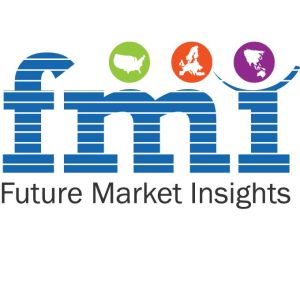Inorganic Coagulants Market Value Chain, Dynamics and Key Players (2018 - 2028)Posted by vakhas on July 5th, 2019 Inorganic coagulants have been famed for being highly cost-effective, which has enhanced their adoption across a wide-range of applications. Inorganic coagulants are widely sought after across a broad range of water and wastewater applications, which has boosted growth of the inorganic coagulants market. High effectiveness in the case of raw water with low turbidity, wherein organic coagulants are misfits, is primarily fostering the adoption rate of inorganic coagulants. Rising demand for metal hydroxides used for water cleaning purposes, formed as a result of reaction between water and inorganic coagulants, is also pushing the clamor for inorganic coagulants. The capabilities of inorganic coagulants apropos of treatment of difficult-to-treat colloidal suspensions is fostering its popularity by a considerable attempt. Some of the widely used types of inorganic coagulants include aluminum sulfate (Alum), aluminum chloride, polyaluminum chloride (PAC) & aluminum chlorohydrate (ACH), ferric sulfate & ferrous sulfate, and ferric chloride. The demand of specialty inorganic coagulants is also witnessing a notable upswing across multiple wastewater treatment plants and a diverse variety of industries to aid processes including flocculation and coagulation. Manufacturers of inorganic coagulants are vying to offer a diverse portfolio of products offering optimal performance at economic costs. Moreover, the leading manufacturing companies are also investing in expansion of manufacturing locations, which helps them ensure fast as well as secured delivery. Request Free Sample Report@ https://www.factmr.com/connectus/sample?flag=S&rep_id=1054 Global Inorganic Coagulants Market: Introduction Coagulants are chemicals used for the primary treatment of sludge. They destabilise the particles by neutralising the charge on the particle with charges opposite to those of the suspended solids. Once the charges are destabilised, the particles are capable of sticking together. Coagulants are of two types, namely organic and inorganic. Organic coagulants are plant-based coagulants with high ability to remove pollutants from water. Inorganic coagulants, on the other hand, consist of coagulants based on metals, which are corrosive in nature and thus harmful to the material to which they are applied. Aluminium-based coagulants are widely used for the treatment of water and wastewater owing to the low price and easily availability of raw materials Aluminium-based coagulants are used extensively across the globe, mainly in Asia pacific, Latin America, and the Middle East & Africa, whereas iron-based coagulants are used in Europe and North America. Global Inorganic Coagulants Market: Regional Outlook Europe is estimated to hold a significant market share of the iron-based coagulants market during the forecast period, which can be attributed to the high efficiency of iron-based coagulants in the removal of pollutants from water and wastewater. China is estimated to witness prominent growth in the application of iron-based coagulants during the forecast period, which can be attributed to the large presence of manufacturers and distributors of iron-based coagulants in the region. The U.S. is estimated to shift towards the use of iron-based coagulants from aluminium-based coagulants. Canada and Russia are estimated to continue the trend of using aluminium-based coagulants during the forecast period. Brazil is estimated to witness growth in the application of iron-based coagulants during the forecast period, which can be attributed to growing investments by the government in Brazil for the treatment of water. Global Inorganic Coagulants Market: Market Participants The report covers exhaustive analysis on:
Regional analysis includes
The report is a compilation of first-hand information, qualitative and quantitative assessment by industry analysts, inputs from industry experts and industry participants across the value chain. The report provides in-depth analysis of parent market trends, macro-economic indicators and governing factors along with market attractiveness as per segments. The report also maps the qualitative impact of various market factors on market segments and geographies. Like it? Share it!More by this author |


